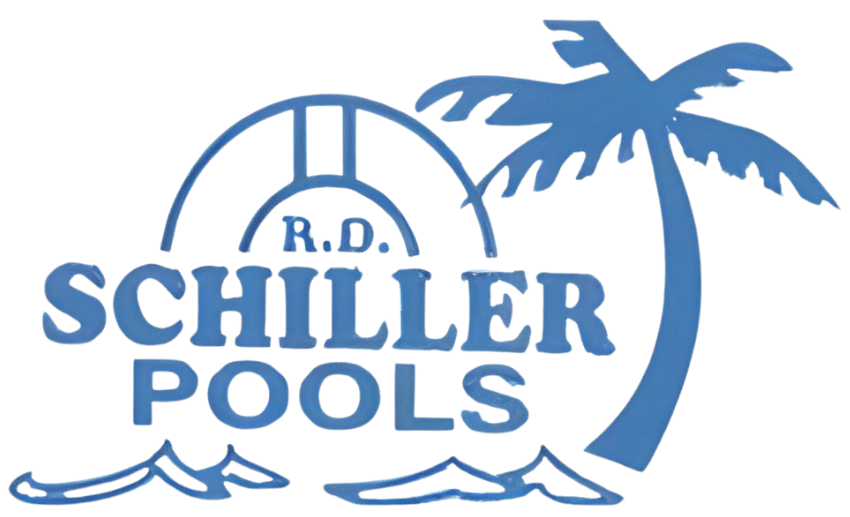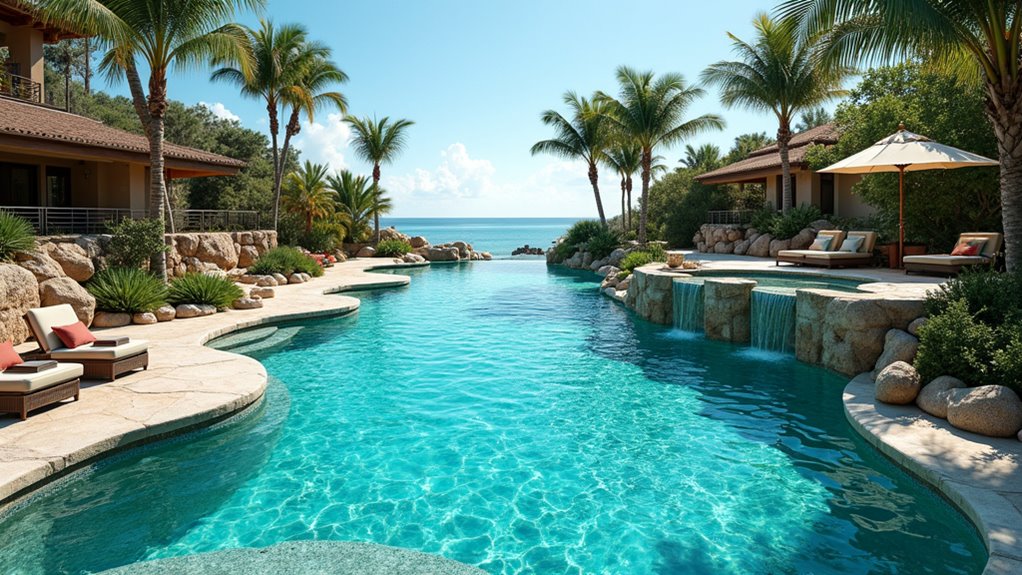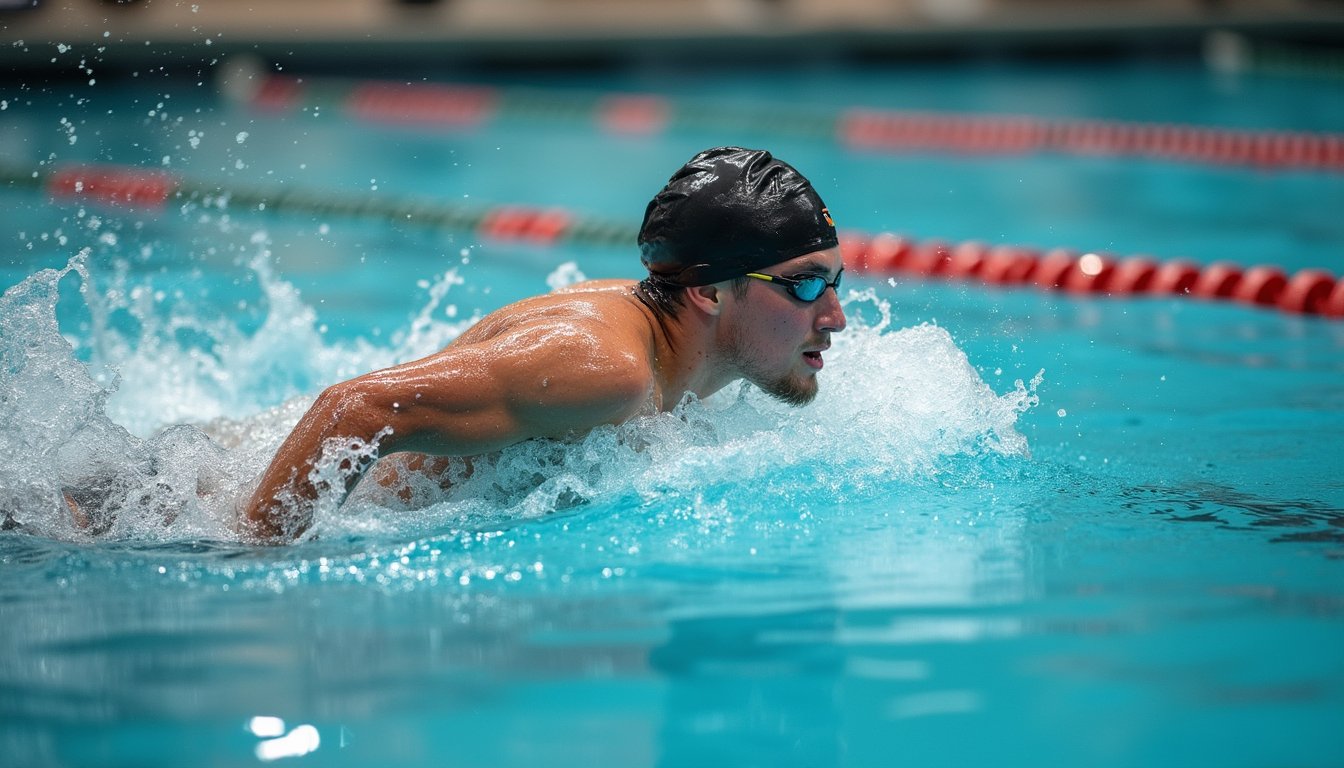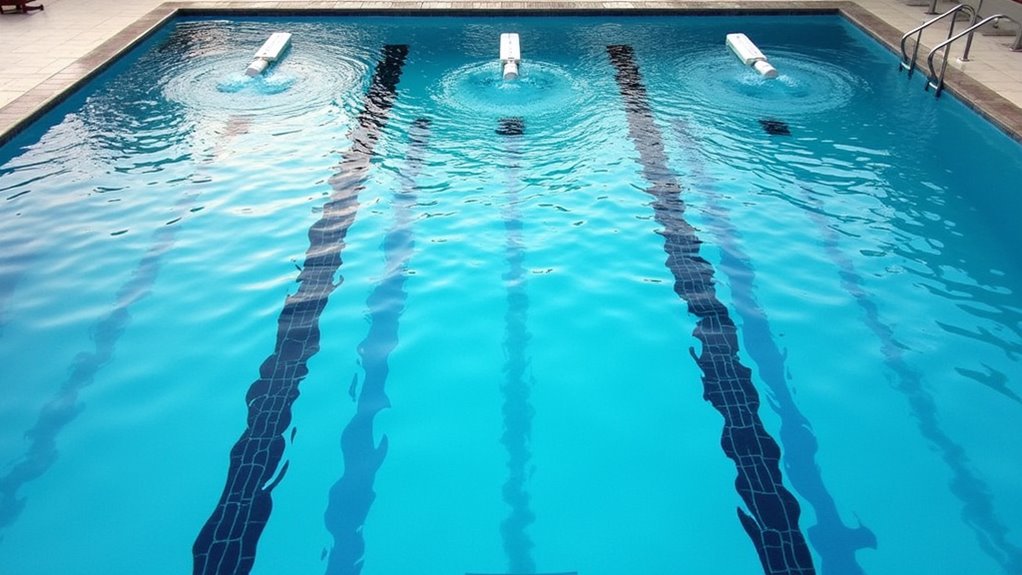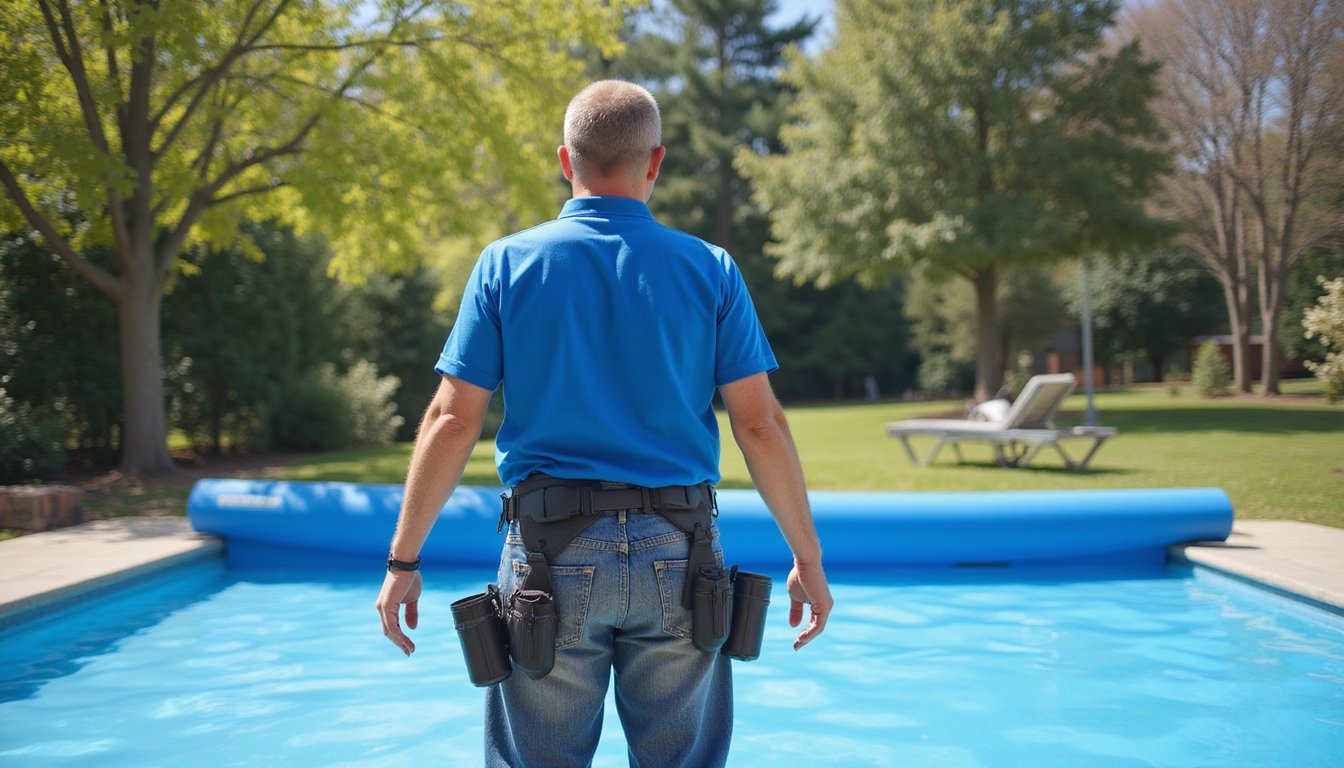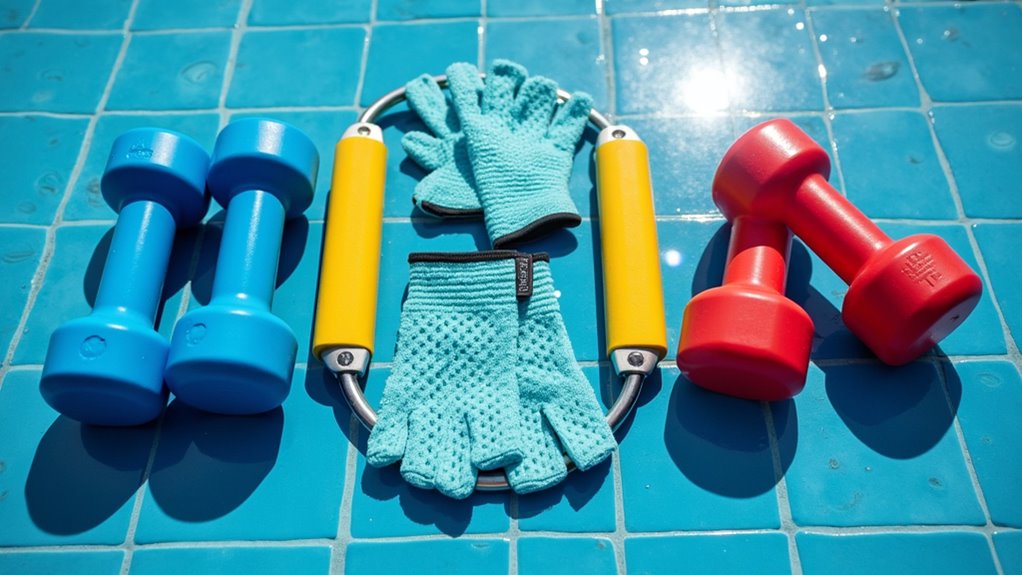To select the right resistance pool, you’ll need a system with powerful hydraulics delivering 25,000 GPM and 100 adjustable speed settings for precise training control. Your facility should maintain depths of 42 inches with strategically marked 25-foot intervals and proper safety features, including certified supervision. Guarantee dual purification systems with UVC and CD ozone treatment for ideal water quality. The integration of specialized resistance equipment and progressive training principles will access your facility’s full potential.
Essential Features of Modern Resistance Pools

Modern resistance pools represent a sophisticated fusion of hydraulic engineering and aquatic training technology. You’ll find these systems equipped with powerful 5HP hydraulic motors delivering precisely controlled currents up to 25,000 gallons per minute, enabling optimal water flow optimization for diverse training intensities. The modular construction design allows for maximum space efficiency in any home setting. These versatile systems offer all-in-one solutions that arrive fully assembled for straightforward installation.
The advanced Hydrodrive™ technology creates laminar currents that surpass standard body width and stroke depth requirements, making them ideal for injury prevention strategies during rehabilitation and athletic training. You can select from 100 different speed settings, ranging from 5:00 to 1:08 minutes per 100 yards, while the multiple conditioning grills guarantee turbulence-free swimming conditions. The dual purification system, combining UVC and CD Ozone treatment, maintains pristine water quality that’s essential for consistent, high-performance training sessions. Spa seating areas with specialized hydromassage jets provide essential post-workout recovery options.
Understanding Pool Depth and Training Zones
Pool depth configurations lay the foundation for effective aquatic training environments, with precise measurements dictating both safety parameters and ideal exercise conditions. You’ll find the best training depths range from three to five feet for most activities, with four feet being the standard minimum for diverse exercise applications. H2X swim spas offer standard 42-inch depths that provide an ideal training environment for most users. Deeper areas require increased maintenance costs due to larger water volumes and higher energy consumption.
When designing your resistance pool, you’ll need to consider universal design considerations and accessibility standards. These include sloped entries reaching depths between 24-30 inches below water level and strategically placed pool lifts in areas under 48 inches deep. Your training zones must feature clearly marked depths at maximum 25-foot intervals, visible from both deck and water positions. For multi-purpose facilities, incorporate graduated depth changes, ensuring proper L1, L3, and L4 measurements between shallow and deep zones maintain safety compliance. The pool lift seat must be positioned with a 16-inch minimum centerline from the pool edge to ensure safe transfers during entry and exit.
Selecting the Right Equipment Setup

When planning your resistance pool equipment setup, you’ll need to integrate both fixed and portable training tools that optimize aquatic resistance exercises while ensuring user safety and progression. Your resistance equipment selection should combine aquatic dumbbells, water weights, and hand buoys for upper body training with DragSox and swim parachutes for lower body conditioning. Consider investing in a power tower system for extensive resistance control, particularly for athlete skill progression programs. Regular intervals of water walking or jogging provide an excellent warm-up method before more intense resistance training. Webbed gloves allow users to maintain natural hand movements while adding resistance to every stroke and motion.
You’ll want to incorporate flotation devices like pull buoys and buoyancy belts to maintain proper form during exercises. Multi-purpose equipment integration maximizes training flexibility while minimizing storage requirements. For cardiovascular improvement, swim current systems provide adjustable resistance levels that accommodate diverse fitness capabilities, allowing you to create customized training programs for different skill levels.
Maximizing Safety in Water-Based Training
Maintaining rigorous safety protocols forms the foundation of effective water-based resistance training. You’ll need a certified lifeguard with current Red Cross credentials supervising all sessions, particularly when developing dive team proficiencies. Your facility must maintain proper water depth of at least nine feet and include essential rescue equipment like shepherd’s crooks and ring buoys. Close and constant supervision must be provided whenever children participate in training activities.
For in-water coaching techniques, you’ll want to implement a buddy system and guarantee participants can demonstrate basic water survival skills. Keep your training deck-based when possible, as this provides ideal observation and emergency response capabilities. You must also verify that your pool meets current safety standards, including anti-entrapment drain covers and proper fencing. Remember, participants should never enter the water head-first, and you’ll need to maintain constant supervision throughout all training sessions.
Building Progressive Training Programs

Successful resistance pool training demands a systematic approach to progressive overload and exercise prescription. You’ll need to implement periodization principles that alternate between stress and recovery phases while incorporating both multiple-joint and single-joint movements in your aquatic workouts. Start with 2-3 sessions weekly if you’re a novice, performing 8-12 repetitions per set with moderate contraction velocities. When progressing in your training, consider making 2-10% load increases once you can exceed your target repetition range. Modern training approaches like auto-regulation programming can help optimize your progress by adjusting workouts based on daily performance capabilities. Proper supervision during initial training sessions ensures correct exercise technique and form.
As you advance, you’ll benefit from autoregulatory techniques that adjust your training based on daily performance capacity. Consider nutrient timing strategies to support recovery between sessions. Structure your pool workouts by sequencing larger muscle groups before smaller ones, and maintain higher-intensity exercises early in your session. For ideal results, include a minimum of 8-10 exercises targeting major muscle groups, with adequate rest periods between sets.
Advanced Resistance Pool Technologies
Modern resistance pool technologies have revolutionized aquatic training through sophisticated systems that deliver precise control over water resistance and flow patterns. You’ll find cutting-edge options like SwimEx’s 99-level paddlewheel system and HydroWorx’s precision-controlled underwater treadmills that enable biomechanical optimization during training. The SwimEx 600T pool has become a preferred choice for professional athletes seeking comprehensive aquatic training solutions. The pool’s removable support bars provide essential stability while maintaining flexible training configurations.
| Technology | Performance Benefit | Recovery Benefit | Training Control |
|---|---|---|---|
| Paddlewheel | Adjustable water flow up to 99 levels | Reduced joint stress | Real-time resistance adjustment |
| HydroDrive | Smooth, turbulence-free current | Multi-directional therapy | Speed control to 7.5 mph |
| Resistance Jets | Targeted muscle engagement | Deep tissue massage | 20-30 second intervals |
| Smart Analytics | Performance tracking | Progress monitoring | Remote tablet control |
These advanced systems integrate sophisticated monitoring capabilities through NLAC Swim Smart analytics, allowing you to track progress and adjust training parameters with precision.
Key Benefits for Athletic Performance
Your training recovery times can markedly improve through resistance pool work, as the water’s buoyancy reduces post-exercise inflammation while maintaining cardiovascular intensity. You’ll build sustainable training loads by progressively challenging your muscles against water resistance, which allows precise control over intensity without the joint stress of land-based training. The controlled aquatic environment lets you maintain higher training volumes while reducing the risk of overuse injuries, optimizing your body’s adaptation to increased workloads.
Maximizing Athletic Recovery Times
Athletes seeking peak performance must understand the critical interplay between training intensity and strategic recovery periods. You’ll need to implement customized recovery techniques that address both physiological and mental restoration. Research shows your muscles undergo microscopic damage during intense workouts, requiring dedicated recovery phases to rebuild and strengthen.
In resistance pool training, you can optimize injury rehabilitation protocols through active recovery strategies that maintain strength while promoting healing. You’ll benefit from submaximal activities like water jogging or resistance exercises that improve recovery without overtaxing damaged tissues. This approach helps prevent muscle atrophy, which can occur at rates of 2-3% daily during inactivity. By combining structured pool workouts with strategic recovery periods, you’ll maintain neural pathways important for performance while supporting your body’s natural healing processes.
Building Sustainable Training Intensity
Developing sustainable training intensity requires a strategic balance between differing workout loads to optimize physiological adaptations. You’ll maximize performance gains by implementing progressive work to rest ratios across low, moderate, and high-intensity sessions. Strategic intensity periodization should follow a pyramidal distribution, where you’ll spend most training time at lower intensities to build capillarity and enhance fat utilization.
Incorporate high-intensity intervals to accumulate critical time at VO₂max, targeting 30-second work periods at minimal velocity with active recovery. This approach doubles your time at peak oxygen consumption compared to continuous running. For explosive power development, you’ll benefit from repeated sprint training using 10-20 maximal efforts lasting under 10 seconds, maintaining intensities above 120% of your VO₂max velocity.
Space Requirements and Design Considerations
To enhance your resistance pool’s layout, you’ll need a minimum installation footprint of 10 feet by 18 feet for a standard 8′ x 15′ training system, while ensuring proper clearance for maintenance access and user movement. You can amplify space utilization by incorporating adjustable-depth features that accommodate multiple training modalities within the same footprint, from shallow-water running to deep-water resistance exercises. For ideal functionality, position your pool to allow 36-inch minimum deck clearance on all sides, with additional space allocated for equipment storage and workout preparation areas.
Pool Layout Optimization Strategies
The successful design of a resistance training pool hinges on careful space planning and precise dimensional calculations. You’ll need to optimize your layout by considering both efficient circulation dynamics and flexible surface customization options. Start by measuring your available space using precise laser measurements, accounting for essential features like gutters and circulation systems.
For ideal training conditions, consider a pool width of at least 10 feet to reduce water turbulence between swimmers. Your circulation system should efficiently manage wave energy generated by multiple users while maintaining proper water treatment. When planning depth variations, incorporate a 4-foot shallow end changing to a 6-foot deep end for diverse training activities. Remember to allocate supplementary space for decking, equipment access, and safety features like non-slip surfaces around high-traffic areas.
Maximum Space Utilization Tips
Smart space utilization starts with understanding core dimensional requirements for resistance pools. You’ll need a minimum interior space of 8′ x 15′ for standard endless pools, though a 10′ x 18′ installation area provides ideal accessibility. For efficient space utilization, guarantee your site can support 250 pounds per square foot.
Your compact footprint layout should factor in multi-purpose functionality. Consider a uniform 1.2-meter depth for cost efficiency unless you’re planning dive training, which requires 2.0 meters at designated ends. Width-wise, you can accommodate two swimmers in commercial lanes measuring 2.5 meters, while residential resistance pools typically range from 1.5 to 4 meters. For maximum versatility, incorporate adjustable bottom systems to serve different user groups without requiring separate training areas.
Maintenance and Water Quality Standards
Maintaining proper water chemistry in resistance pools requires strict adherence to established chemical balance standards and disinfection protocols. You’ll need to monitor pH levels between 7.0-7.8 while maintaining proper chlorine residuals of 1.0-10.0 mg/L, depending on your pool’s specific requirements. Managing cyanuric acid levels is essential, with concentrations not exceeding 100 mg/L and ideally staying below 40 mg/L.
You must test pH and disinfectant levels twice daily, particularly before opening and during peak usage. Weekly testing of total alkalinity guarantees proper pH buffering capacity. Your ORP controllers should maintain water potential between 650-900 mV. For indoor resistance pools, maintain temperatures between 70-90°F, and confirm your filtration systems keep water clarity sufficient to view pool bottom surfaces clearly.
Training Variations and Applications
You’ll need to establish progressive resistance loads that align with your training goals, starting with lighter resistances and gradually increasing intensity as adaptations occur. Your cross-training movement patterns should incorporate both horizontal and vertical plane exercises to boost overall muscular recruitment and neuromuscular coordination in the water. Sport-specific workout design requires careful consideration of exercise sequencing, rest intervals, and resistance progression to optimize both power development and technical efficiency in swimming movements.
Progressive Resistance Load Planning
Effective resistance training demands a systematic approach to load progression that aligns with established physiological adaptation principles. You’ll need to implement progression tempo adjustments and periodized load oscillation while staying within the 10% weekly increase guideline for ideal adaptation.
| Training Phase | Load Range | Weekly Increase |
|---|---|---|
| Foundation | 70-75% 1RM | 3-5% |
| Development | 75-80% 1RM | 3-4% |
| Peak | 80-85% 1RM | 2-3% |
Your training should incorporate autoregulatory elements that account for daily performance variables. Start with volume progression through supplementary sets (3 to 5), then advance to complexity progression as movement patterns improve. You’ll want to monitor effort levels during each set to determine readiness for load increases, while maintaining proper technique to prevent injury risk.
Cross-Training Movement Patterns
Building upon load progression principles, cross-training movement patterns expand the scope of resistance training through multi-planar applications and diverse movement variations. You’ll augment your training effectiveness by incorporating fundamental patterns like horizontal push-pull, vertical push-pull, squat, hinge, and rotation movements.
Multi-joint exercises that mirror natural coordination patterns activate more muscle groups while improving functional strength. You’ll want to balance your training across movement categories rather than isolated muscle groups, which helps prevent compensatory patterns and reduces injury risk. By incorporating cross-patterning exercises like crawling movements and dynamic variable resistance training, you’ll develop better core stability and neuromuscular coordination. This approach addresses sport-specific imbalances while ensuring thorough development through movements that challenge your body across multiple planes of motion.
Sport-Specific Workout Design
Successful sport-specific workout design hinges on matching training variables to the unique physical demands and movement patterns of each athletic discipline. You’ll need to integrate nutrition planning and recovery monitoring while considering training specificity principles for ideal results.
| Sport Type | Primary Focus | Training Approach |
|---|---|---|
| Court Sports | Power/Agility | Plyometrics, 2-6 RM |
| Endurance | Stamina/Form | 8-12 RM, Bands |
| Field Sports | Multi-directional | Lateral/Rotational |
Select exercises that mirror your sport’s movement patterns while maintaining proper intensity ranges. For basketball, incorporate explosive plyometrics with wobble board balance work. For swimming, utilize resistance bands within appropriate repetition ranges. Progress your training loads systematically, increasing weights by 2-10% when you can exceed target repetitions comfortably. Remember to adjust your workout design based on competitive level and individual performance goals.
Frequently Asked Questions
How Long Does It Take to See Measurable Improvements in Athletic Performance?
You’ll notice initial adaptations within 1-4 weeks, primarily through improved cardiovascular endurance and neurological efficiency. By 4-8 weeks, you’ll experience amplified muscle strength and better metabolic function. Significant performance gains become evident at 8-12 weeks, with measurable improvements in VO2 max and lactate threshold. Your body’s adaptations follow a progressive timeline, where early nervous system changes precede more substantial physiological improvements in strength and endurance.
Can Resistance Pool Training Help With Weight Loss and Body Composition?
Yes, resistance pool training can effectively support your weight loss and improve body composition. You’ll experience muscle growth amplification due to water’s constant resistance while performing movements in all directions. The combination of cardio and resistance training increases your metabolic rate both during and after workouts. Studies show that aquajogging can reduce body fat and waist circumference within six weeks, even without dietary restrictions, while also improving your physical function scores.
What Are the Energy Costs Compared to Maintaining a Regular Pool?
You’ll find resistance pools are vastly more energy-efficient than traditional pools. Their energy consumption factors include super-efficient 120-watt pumps versus standard pool pumps that cost $900+ annually to operate. When comparing maintenance cost comparisons, you’ll spend about 70% less on energy with a resistance pool’s triple-layer insulation system and smaller water volume. The tri-thermic barriers and locking covers further reduce your heating costs by up to 28% year-round.
Are There Specific Certifications Required for Resistance Pool Training Instructors?
You’ll need specialized certifications beyond standard aquatic instruction to teach resistance pool training. You must obtain your basic Water Safety Instructor certification initially, then pursue advanced aquatic exercise credentials focusing on resistance training. Industry standards for resistance pool trainers typically require supplementary certifications in therapeutic applications and specialized equipment use. You’ll also need to maintain current CPR, First Aid, and specific resistance training continuing education credits.
How Does Chlorine Exposure Affect Muscle Recovery During Intensive Training Programs?
When you’re training intensively, chlorine exposure levels can notably impact your muscle recovery. You’ll experience altered metabolic profiles, with increased urinary metabolites and decreased taurine levels affecting your muscle function. Your body needs at least one full night for ideal recovery duration to eliminate absorbed chlorine-related substances. If you don’t allow sufficient recovery time between sessions, you’ll risk toxic build-up and impaired training adaptations, potentially compromising your performance gains.
